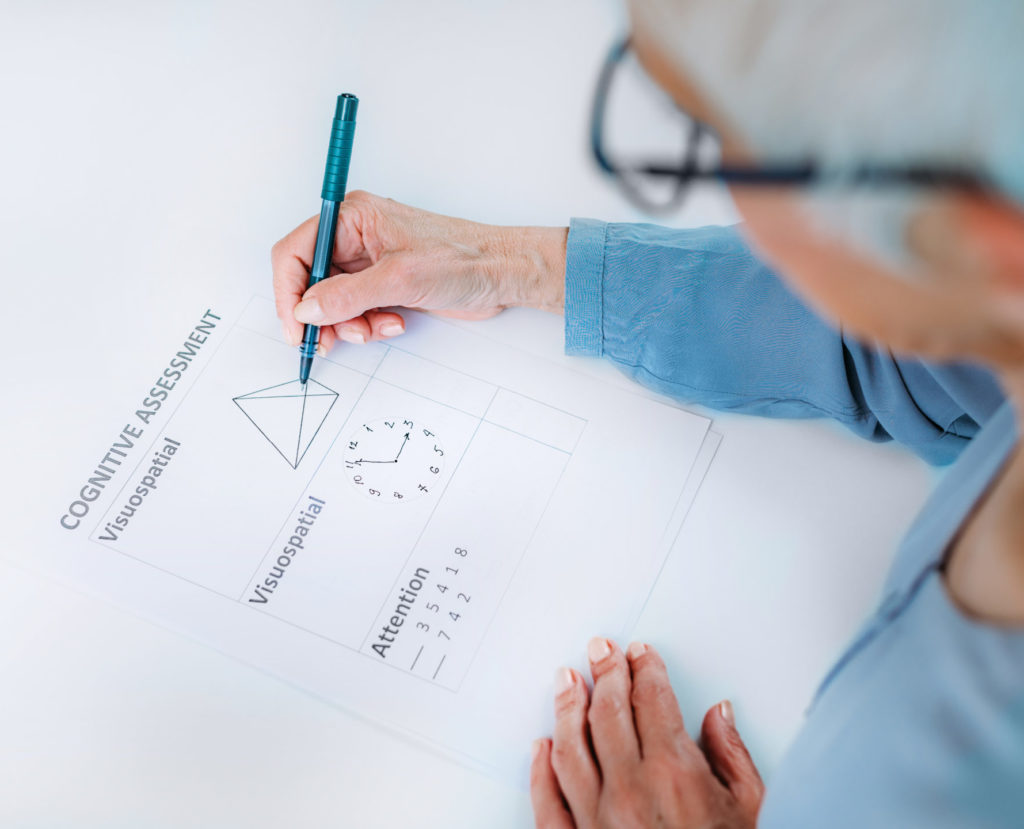The CANS-MCI has been consistently referenced by major journals in articles that covered computer-directed neuropsychological tests. In 2008, in a study that systematically reviewed the top 11 computer-based test batteries that are used to detect cognitive decline in aging populations, independent researchers gave the CANS-MCI test battery the top overall score in all categories that were assessed.
CANS-MCI Screening Software System
Easily Assess Patient’s Cognitive Health

Concussion Assessment
The central changes in cognitive ability due to sports concussion are memory, cognitive processing speed, and reaction time — all measured at millisecond accuracy by the CANS-MCI. Our automated administration also eliminates the potential for either the deliberate or unintended bias of in-person testers. Comparison to baseline can be performed before risking a second concussion.
Neurological Complications of COVID-19
Brain fog associated with COVID is a disorder of executive function that makes even basic cognitive tasks complicated; memory can also be affected. The CANS-MCI measures the relevant cognitive dimensions and the influence of depression, making it exceptionally accurate for longitudinal tracking.
Preclinical Diagnosis of AD
Biomarker research finds CANS-MCI performance predicts both elevated Aβ and tau. The CANS-MCI captures item-level response times at millisecond accuracy and can detect patterns of delay associated with the preclinical stage of AD.
Tracking "Chemo Brain"
When cognitive and emotional changes associated with cancer treatment are important to evaluate, baseline data can be compared with post-treatment testing. The CANS-MCI provides the most staff-efficient, objective, longitudinal assessment of cognitive change available today.
The CANS-MCI Test Battery: 8 Tests in 3 Cognitive Domains
Three Cognitive Domains
Memory and complex cognitive (“executive”) functions using various symbol fluency and information-processing tasks (simple and complex) are predictive of dementia.
Memory
The most predictive methods of memory measurement (category-guided memory acquisition, immediate and delayed free and guided recall) were selected and combined to create the most reliable and longitudinally valid composite Memory factor score.
8 Self-Administered Tests
The assessment of cognition includes measures of free and guided recall, delayed free and guided recognition, primed picture naming, word-to-picture matching, design matching, clock hand placement, and the Stroop Test.
-
Orientation
Presents progressively more difficult tests of general reaction time.
-
Word-To-Picture Matching
Presents sets of four pictures with a word that describes one of the four. The patient is instructed to touch the picture that goes with the word.
-
Free and Guided Recall - Immediate
The patient learns 5 sets of four different pictures by touching ones that fit into categories. The same items are displayed for free recall, shown along with two incorrect items from other categories. Incorrect answers are tested for category-guided recall and items are re-learned before a new free recall trial.
-
Design Matching
Presents 8 designs, paired with letters in non-alphabetical order, and a set of buttons with the letters in alphabetical order. One of the designs is presented and the patient is instructed to touch its paired letter. Complexity of the required attention-switching is increased by design similarity.
-
Clock Hand Placement
Ten blank clock faces are presented with a digital time. The patient is instructed to touch the appropriate hour-hand position and then the appropriate minute-hand position on an analog clock face.
-
Stroop
The patient is instructed to touch buttons matching the ink color, not the word name, of the words “red”, “blue”, or “green”, which are shown one at a time in either red, blue or green ink.
-
Naming
Pictures in multiple categories are shown, each with one correct, and three incorrect, 2-letter ‘word beginnings’ (e.g., Ro….. for a picture of a Rose). The patient is instructed to touch the most likely word beginning.
-
Free and Guided Recall - Delayed
Presents a delayed trial of the Free and Guided Recall tests.
For more information, contact us at (813) 582-3971
Or contact us via email form below
